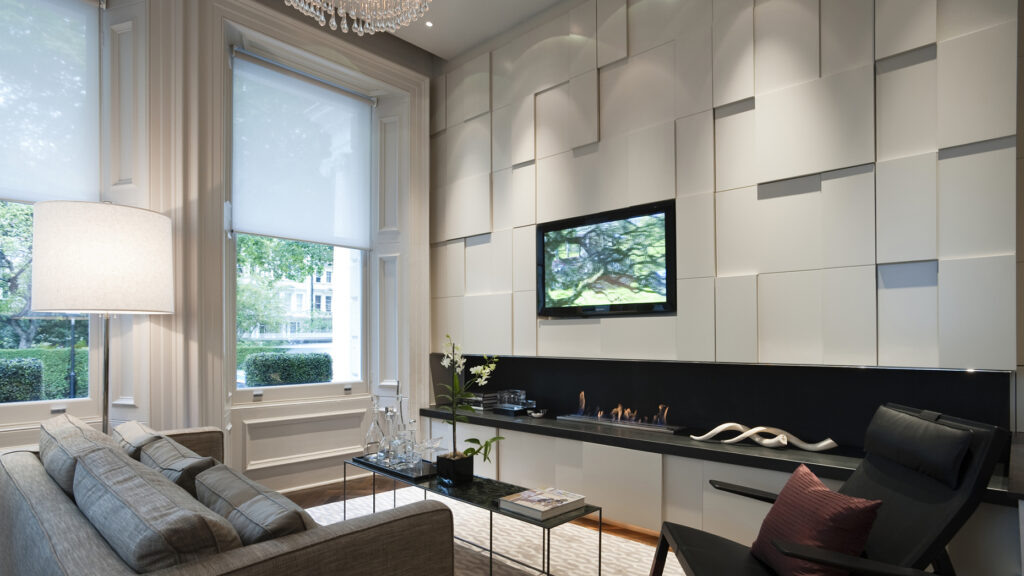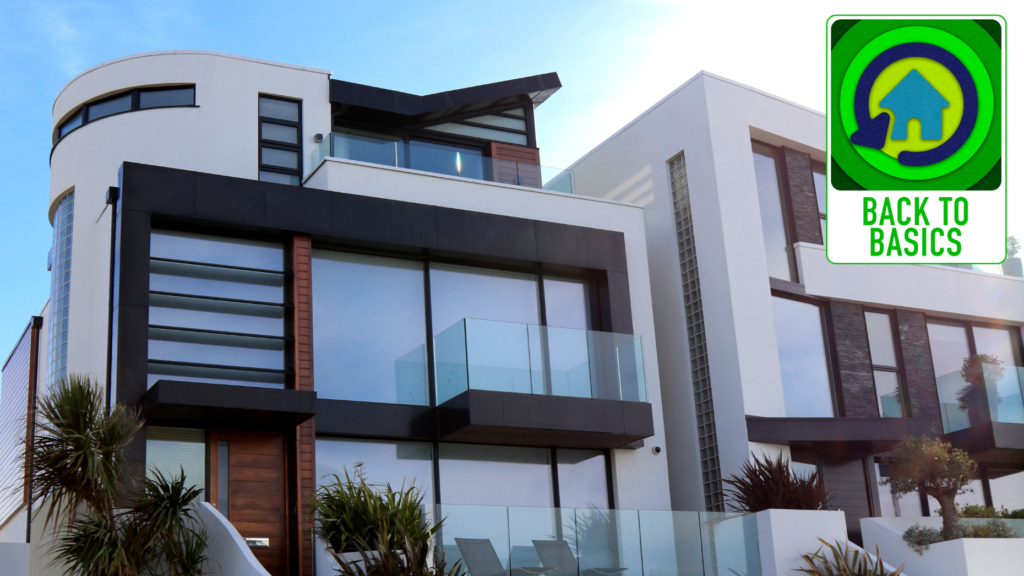Few can doubt that the right lighting control provides an elevated experience at home, especially when systems account for natural lighting.
With today’s home automation capabilities, homeowners can leverage smart shading solutions to welcome natural sunlight into the home or transform rays to create a stunning ambiance with just the touch of a button or a simple voice command.
While it’s not hard to enjoy the benefits that smart shading solutions bring to a bedroom or living room — like on-demand privacy for your family at night or pre-scheduled scenes to align with your natural circadian rhythm — there are a ton of unique uses for smart shading solutions across the home. Here are three that you may not have considered.
An easier way to reach for the sky
Skylights are a popular feature across home styles that give homeowners the best of both worlds: While skylights provide the same natural light as traditionally placed windows, they offer additional privacy, making them a great feature for intimate spaces in the home like the bathroom and bedroom.
For many homeowners, however, controlling the level of sunlight entering through their skylight is a little more out of reach — literally. These windows tend to require a ladder or an arm span as long as Mo Bamba’s to open or close blinds — and when the skylight wakes you up at the crack of dawn on a Sunday when you would rather sleep in, neither of those are accessible options.
This is where automated shades come in: Offering the best of all the worlds, custom smart shades allow homeowners to maintain natural sunlight when they want to, employ room darkening features when they are needed, and still reap the privacy benefits of skylights.
Shades are controlled with just a simple voice command, in-app, or via a pre-set schedule to remove the need for manual adjustment, and wireless battery power options ensure homeowners will not have to worry about plugging in their shades or pre-wiring.
“Most people think of the role of shades in two ways: blocking light or allowing full light, but there are tons of automation options that homeowners can utilize to control natural light from skylights,” said Scott Stephenson, director of product management, motorization for Hunter Douglas.
“Beyond shade styles, utilizing automation schedules allows homeowners to open, close, raise and lower window treatments without giving them a second thought.”
Suspending disbelief, from the cinema to the faux driving range
Over the last few years, home entertainment has skyrocketed: A recent report found streaming investments led by Comcast, Disney and Netflix saw the global spend on content reach $220 billion in 2021, with the pot set to exceed $230 billion in 2022.
As better streaming content and variety makes its way into home theaters and living rooms, homeowners are looking for a true theater experience that suspends disbelief in the same way commercial theaters do: cloaking the room in appropriate darkness.
Sensa, a home technology integration company based in Nebraska, shared that they are including automated window treatments in more and more of their home theater projects because it adds to the overall experience, but also shared an interesting multi-use entertainment space application that smart shades tee up:
“Along with the audio, video, motorized projector screen, we also motorized the shades on the window of this basement theater so that the client can control them just like the rest of the technology in the room.
“The window is located near the ceiling and has two shades — a light filtering and a room darkening shade — so operation via motorization is the most functional option. This particular space is used as both a theater and a golf simulator, so having the ease of functionality with the natural lighting was important,” said Alex Bloemer, owner of Sensa.
Gaming and other home entertainment choices have come a long way since the release of the Wii. Especially with the growth of virtual reality and immersive gaming, more homeowners are embracing applications like golf simulators in their homes.
When it comes to transforming multipurpose spaces for these types of rooms, smart shades can isolate the user from reality and elevate the overall experience, without the need to yell “fore” before swinging.
Emphasizing energy efficiency
Windows play a major role in temperature regulation: The U.S. Department of Energy reports that in older homes, windows typically account for 25 percent of annual heating and cooling costs but can be responsible for as much as 40 percent.
That said, protection at the window is key to a low energy bill and eco-friendliness. Many honeycomb styles of automated window treatments can make a major difference in boosting a home’s energy efficiency, and enhancing homeowners’ comfort by keeping cool air in during the summer and warm air in during the winter, especially when set on a schedule to accommodate the sun’s position across seasons.
James Roddy from Smart PNW, a provider of energy solutions and window treatments in the Pacific Northwest, has found automated window treatments to be a key recommendation for clients looking to optimize their energy efficiency.
He explains: “Our goal is not only to make sure smart shading works well in the home and enhances the beauty and comfort but also to drive that energy efficiency element.
“It’s becoming more in demand and more important for homes to be energy efficient, so we’re looking to be the experts in insulation through window treatments, too, to address all aspects of the home related to energy,” Roddy said.
A little-known perk of window treatments, the coupling of energy savings and the convenience offered by automation, make smart shades a valuable return on investment for both homeowners and the planet.
As homeowners seek new ways to enhance experiences across their homes, smart shades offer many use cases that aren’t necessarily conventional but are certainly helpful. Made custom, the opportunities are endless: Homeowners can explore a plethora of styles, fabrics, colors, sizes and shapes to accommodate any window, meaning that no window is too high, too big, or too poorly insulated to reap the benefits of shade automation.
Brandon Doyle is a Realtor at Doyle Real Estate Team — RE/MAX Results in Minneapolis and co-author of Mindset, Methods & Metrics – Winning as a Modern Real Estate Agent. You can follow him on Twitter.



 Are You Interested in West Eleventh Residences Miami?
Are You Interested in West Eleventh Residences Miami? Are You Interested in ONE Park Tower by Turnberry?
Are You Interested in ONE Park Tower by Turnberry? Are You Interested in Diesel Wynwood Condominium?
Are You Interested in Diesel Wynwood Condominium? Are You Interested in Five Park Miami Beach?
Are You Interested in Five Park Miami Beach? Are You Interested in Cipriani Residences Miami?
Are You Interested in Cipriani Residences Miami? Are You Interested in Bentley Residences Miami?
Are You Interested in Bentley Residences Miami? Are You Interested in Baccarat Residences Brickell?
Are You Interested in Baccarat Residences Brickell? Are You Interested in Aria Reserve Miami?
Are You Interested in Aria Reserve Miami? Are You Interested in 888 Brickell Dolce & Gabbana | Miami?
Are You Interested in 888 Brickell Dolce & Gabbana | Miami? Are You Interested in 600 Miami WorldCenter?
Are You Interested in 600 Miami WorldCenter? Are You Interested in HUB MIAMI RESIDENCES?
Are You Interested in HUB MIAMI RESIDENCES? Are You Interested in WALDORF ASTORIA RESIDENCES?
Are You Interested in WALDORF ASTORIA RESIDENCES?